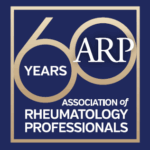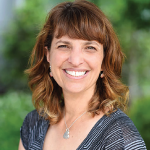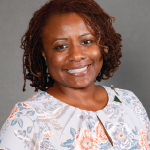“Happy 60th, ARP! In this month’s issue, four former ARP presidents talk about where the ARP has been, where we are now and the exciting future ahead.” —Bharat Kumar, MD, MME, FACP, FAAAAI, RhMSUS
As we mark the 60th anniversary of the Association of Rheumatology Professionals (ARP), a group of past ARP presidents gathered to discuss the various changes that have shaped the organization over decades. Taking a long view can help the ARP, the ACR and their members address challenges and create opportunities in the years ahead. Reflecting on the past 60 years of rheumatology, the growth within our many professions and the ARP’s own evolution allows us to assess our current position and envision future advancements while nurturing interdisciplinary communication and collaboration—core strengths of the ARP.
 Why Us & Why Now?
Why Us & Why Now?
We, as four former ARP presidents, come from different professional disciplines and eras and have watched the organization’s evolution from the Paramedical Section of the Arthritis Foundation in 1965, with 40 members, to today’s Interprofessional Division of the ACR, with 1,575 members (18% of the ACR’s total membership) representing 24 diverse disciplines in clinical care, research, education and administration. While we bring robust experience, detailed knowledge and plenty of opinions, we no longer have a seat at the table. Our view from the bleachers, combined with more than 140 years of collective experience in the ACR/ARP, gives us a solid foundation to look back at the past and to look toward the future. Our goal is to place current and emerging challenges and opportunities in a historical context so the ACR/ARP can draw on past lessons to help shape the future.
It is not only the ACR and ARP that are moving toward the future: Every member is addressing current challenges and preparing for those ahead. We bel ieve reflecting on past obstacles and the solutions developed to overcome them will inspire innovative thinking that will transform challenges into opportunities to improve your practice and lead to better health outcomes and quality of life for your patients.
ieve reflecting on past obstacles and the solutions developed to overcome them will inspire innovative thinking that will transform challenges into opportunities to improve your practice and lead to better health outcomes and quality of life for your patients.
With this perspective in mind, we focused our discussion on four key areas: 1) changes in practice, 2) expanding the rheumatology workforce, 3) research and evidence-based practice, and 4) ARP organizational development. These areas are important to our members, have undergone significant development and will continue to influence how rheumatology is practiced going forward.
Practice Changes
Over the years, our focus on meeting patient needs in rheumatic care has remained consistent, but how we meet their needs has evolved and expanded.



